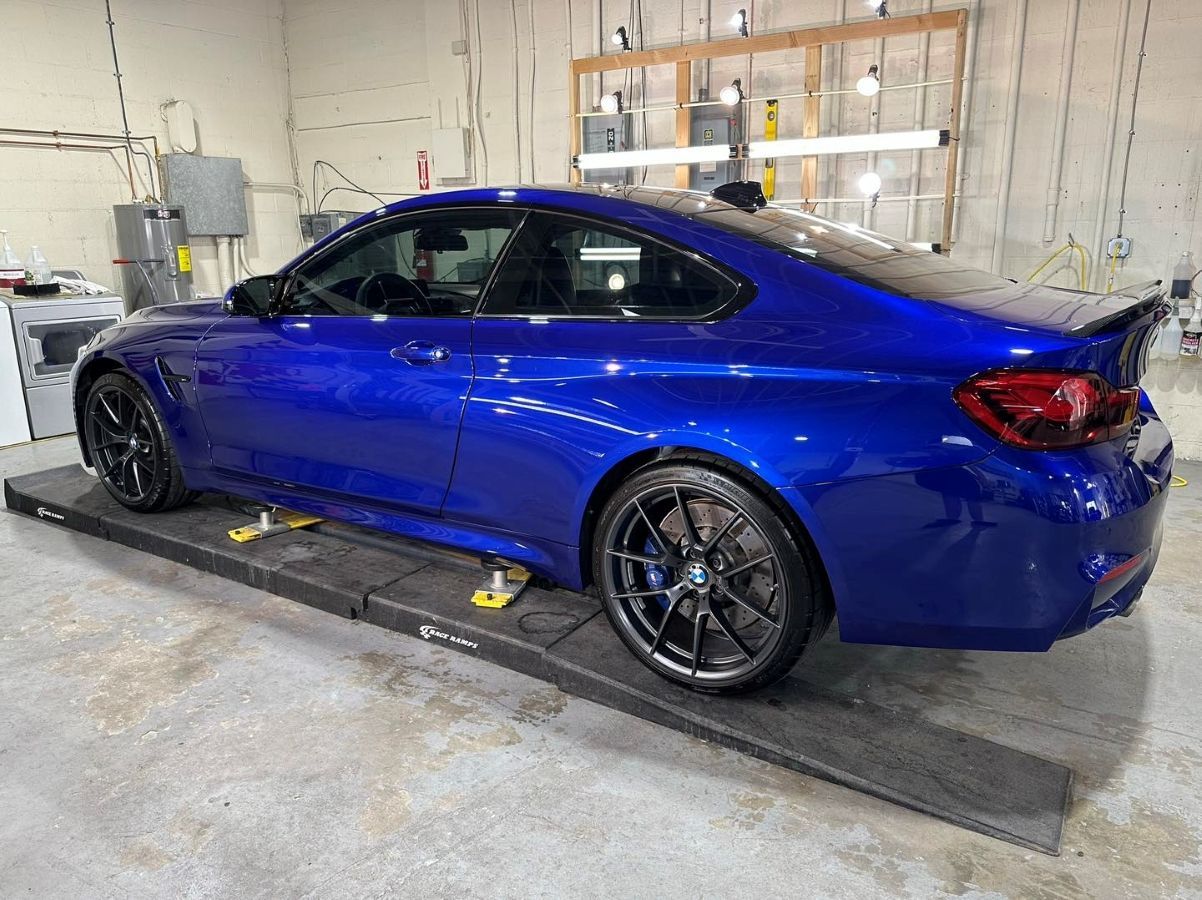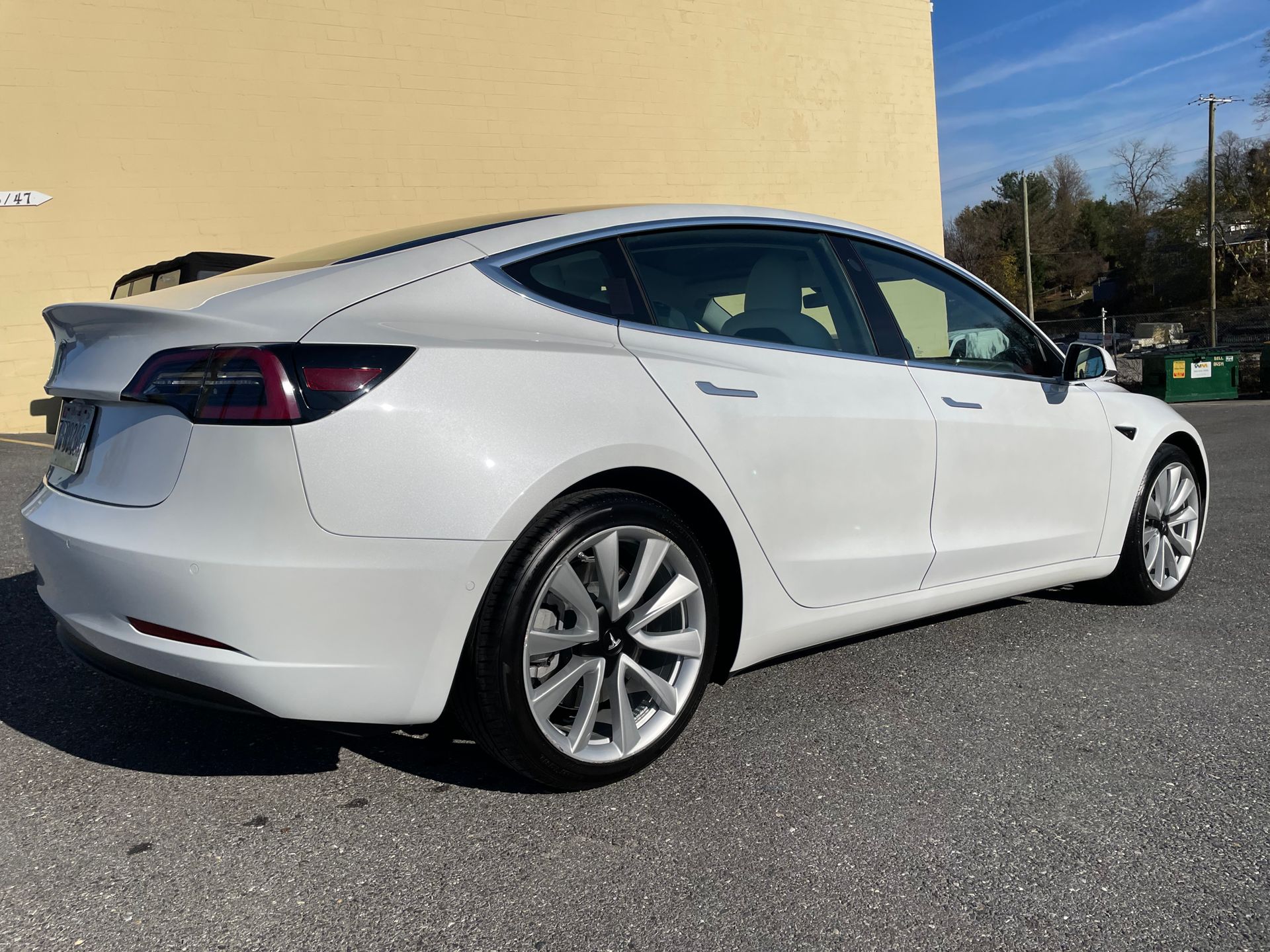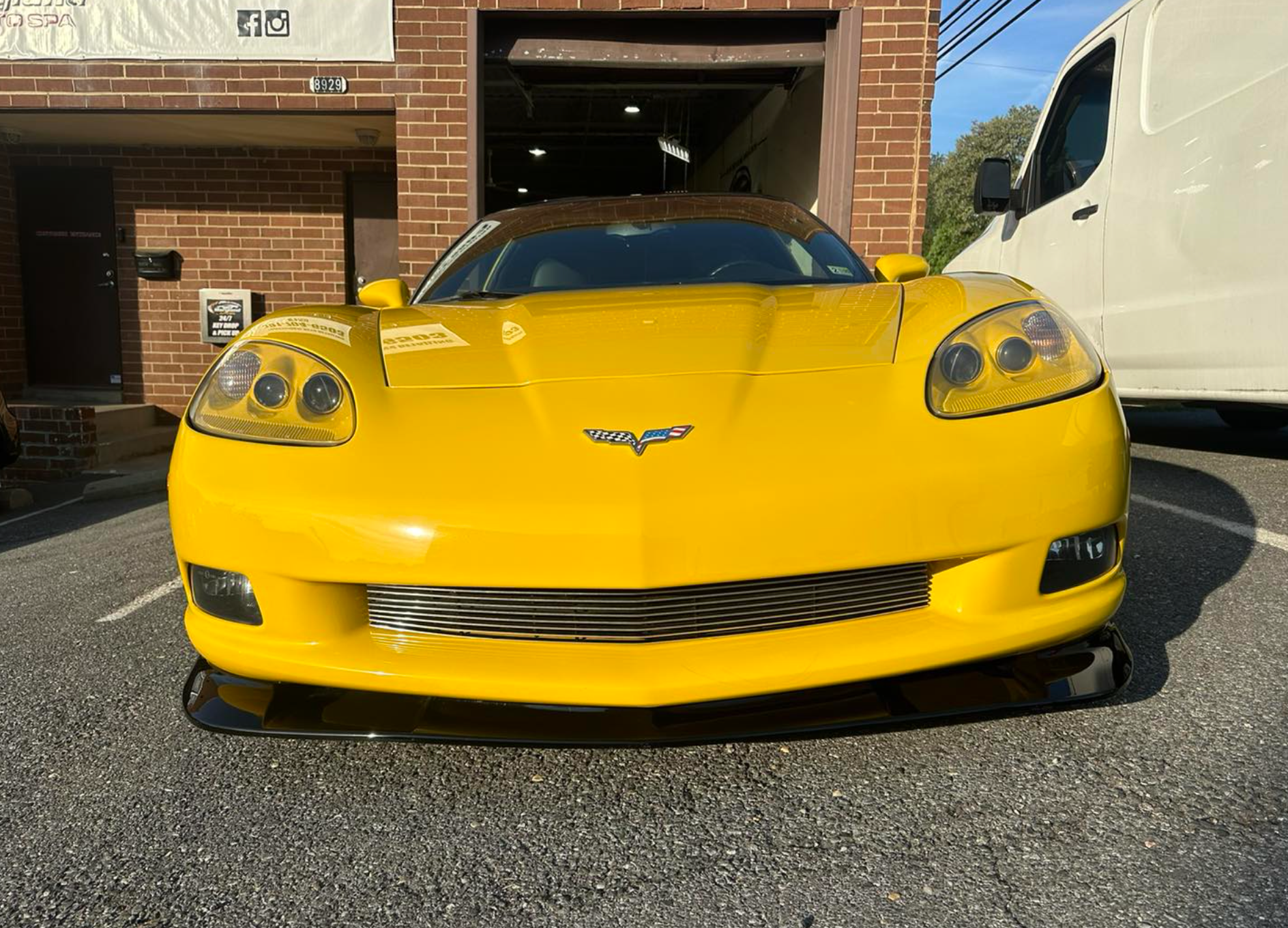How to Clean Paint Protection Film: Maintenance Tips and Techniques
SCHEDULE ONLINE GET A FREE ESTIMATEEnsure your vehicle's lustrous charm remains unblemished with these easy-to-follow steps on cleaning Paint Protection Film (PPF)! With this guide, you'll learn top-notch maintenance tips and techniques that will keep your car in its showroom shine condition.
Decipher the mystery behind keeping a professionally clean PPF while avoiding unnecessary damage or fading! Don’t worry about how to clean and care for your auto PPF - we've got you covered! Get ready to start racking up those envious glances every time your gleaming vehicle hits the road!

Essential Steps of Paint Protection Film Care
Taking care of your paint protection film (PPF) is crucial to ensuring its longevity and effectiveness. By following a few essential care steps, you can maintain the appearance of your film-covered surfaces and protect them from damage.
First and foremost, regular washing is key. Use a gentle automotive shampoo and a microfiber sponge or cloth to clean the surface of the PPF. Make sure to avoid any abrasive materials or harsh chemicals that could potentially damage the film.
After washing, rinse thoroughly to remove any soap residue. This step is important as leftover soap can leave streaks or stains on the film. Using a hose with a gentle spray nozzle will ensure an even and thorough rinse.
Once rinsed, it's recommended to dry the film using a soft, lint-free towel or a microfiber cloth. This will prevent water spots from forming on the surface. Gently patting rather than rubbing the film will minimize any potential scratching.
In addition to regular washing and drying, it's important to be mindful of any chemical contaminants that may come into contact with the PPF. Petroleum-based solvents, gasoline, brake fluid, or harsh cleaners should be avoided as they can cause damage. If any accidental spills or exposures occur, promptly rinse with water.
By incorporating these essential care steps into your routine maintenance, you can ensure your paint protection film stays in optimal condition for years to come.
Importance of Maintaining Film-Covered Surfaces
Film-covered surfaces provide an extra layer of protection against a wide array of potential hazards, such as road debris, UV rays, and environmental contaminants. However, these benefits can only be fully realized if the film is properly maintained and cared for. Learn more benefits of PPF!
Regular maintenance also allows you to promptly identify any signs of wear or damage to the film. By inspecting and cleaning the film on a consistent basis, you can spot any areas that may require additional attention, such as scratches or chips. Addressing these issues early on can help prevent further damage and maintain the integrity of the protective film.
Consider this scenario: You've recently installed PPF on your car's hood, anticipating the protection it offers against stone chips and other road debris. However, without regular maintenance, you might not notice a small chip in the film until it worsens into a larger crack, potentially compromising the underlying paint.
Maintaining your film-covered surfaces not only preserves their appearance but also extends their lifespan. By following proper care steps and addressing any potential issues promptly, you can ensure that your investment in paint protection film continues to provide optimal protection for years to come.
Pre-Cleaning Setup Process
Before diving into the process of cleaning paint protection film, it's crucial to set up a suitable environment. This ensures that the cleaning procedure goes smoothly and effectively. Here are a few essential steps to follow for the pre-cleaning setup:
Firstly, make sure you park your vehicle in a shaded area or undercover to avoid direct sunlight. This not only prevents the cleaning solution from drying out too quickly but also eliminates potential streaking or water spots.
Next, gather all the necessary supplies, such as a microfiber wash mitt or sponge, a bucket filled with warm water and a gentle soap specifically formulated for automotive surfaces, and a clean, soft microfiber towel for drying.
It's also important to remove any loose dirt or debris from the surface of the paint protection film using a gentle stream of water or by lightly rinsing it with a hose.
By taking these initial steps to prepare your cleaning area and gather the appropriate tools and materials, you can ensure a smoother and more effective paint protection film cleaning process.
Effective Area Preparation Techniques
Once you have set up your cleaning environment, it's time to prepare the specific areas of the paint protection film that require attention. This involves understanding where dirt and contaminants tend to accumulate and taking proactive measures to address them.
One common area that requires careful preparation is around the edges and seams of the paint protection film. These areas are prone to trapping dirt and debris over time, making them harder to clean. To ensure thorough cleaning, use a soft detailing brush or a toothbrush with gentle bristles to agitate and dislodge any dirt from these spots before moving on to the main cleaning process.
Additionally, pay close attention to areas that are frequently exposed to road grime, such as lower panels or wheel arches. These areas may require more intensive cleaning techniques, including using specialized cleaners designed for stubborn stains or contaminants.
Taking the time to properly prepare and target specific areas of the paint protection film for cleaning will help ensure a thorough and effective result, maintaining the film's protective qualities and extending its lifespan.

Methods for Dirt Removal
When it comes to cleaning paint protection film, adopting the right methods for dirt removal is crucial. Successful removal of dirt not only restores the film's appearance but also ensures its longevity and effectiveness in protecting your vehicle's paintwork.
A common method for dirt removal is using a gentle yet effective technique called the two-bucket wash. Fill one bucket with soapy water and another with clean water. Dip your wash mitt or sponge into the soapy water, apply it to the film in a straight-line motion, and then rinse it in the clean water before returning to the soapy bucket. This helps prevent contaminating the soapy water with dirt particles and reduces the risk of scratching the film.
For more stubborn dirt or grime, you might consider using a soft-bristled brush with long and gentle strokes. Be cautious not to apply excessive pressure that could potentially damage or lift the corners of the film. Additionally, avoid abrasive materials like rough sponges or brushes that can leave scratches on the surface.
Remember, different situations may require tailored approaches to suit specific circumstances. For instance, if bird droppings or tree sap are present on your paint protection film, it's important to act quickly, as they can cause damage if left unattended. Gently soaking the affected area with warm water or using specialized cleaning products formulated for such contaminants can help loosen them before proceeding with regular cleaning methods.
Recommended Cleaning Solutions and Chemicals
Cleaning solutions and chemicals play a vital role in maintaining the condition of your paint protection film. Using appropriate products ensures effective cleaning while minimizing the risk of damage or degradation to the film itself.
It is recommended to use mild, pH-neutral automotive soap or dedicated film cleaning solutions that are specifically formulated for use on paint protection films. These gentle solutions help remove dirt, grime, and other contaminants without causing any adverse effects on the film's appearance or functionality.
When applying any cleaning solution, always follow the instructions provided by the manufacturer. Dilute the solution as needed and work in small sections at a time to prevent it from drying on the film surface. Additionally, avoid using harsh chemicals like ammonia-based cleaners or aggressive solvents, as they can potentially degrade or discolor the film.
In case you're unsure about a particular cleaning solution or chemical product, it is always best to consult with the manufacturer of your paint protection film for their recommendations. They possess valuable expertise and insights regarding compatible and safe options for optimal maintenance.
Fingerprint Elimination Techniques
Fingerprints on paint protection film can be frustratingly visible, tarnishing the overall appearance. However, there are effective techniques you can employ to eliminate those pesky prints and maintain the pristine look of your paint protection film. One widely used method is using a microfiber cloth with rubbing alcohol.
It's important to remember that not all rubbing alcohols are suitable for this task. Look for isopropyl alcohol (70% concentration), as it effectively cleans the surface without damaging or discoloring the film.
Role of Microfiber Cloths and Rubbing Alcohol
Microfiber cloths play an essential role in maintaining paint protection films due to their unique properties. These cloths are made up of ultra-fine synthetic fibers that have exceptional cleaning capabilities.
When it comes to removing fingerprints, using a microfiber cloth ensures gentle yet effective cleaning without scratching or leaving behind lint. The fibers act like magnets, attracting and trapping dirt particles while minimizing any potential damage to the delicate film surface.
Rubbing alcohol, when used in combination with a microfiber cloth, works wonders at dissolving oils and grime left by fingerprints. It provides a deep cleaning without leaving streaks or residue behind.
Showroom Perfection: Maryland Auto Spa's Pro Tips for Paint Protection Film Care
Elevate your driving experience and protect your investment with Maryland Auto Spa's Paint Protection Film (PPF) services. Our commitment to your car's showroom shine is reflected in the essential care steps we provide, from gentle washing to meticulous drying and guarding against chemical contaminants.
Maintaining film-covered surfaces is not just about aesthetics; it's about extending the lifespan of your protective investment. By promptly addressing wear or damage through regular inspections, you can prevent issues from escalating. Discover the right methods using recommended cleaning solutions and chemicals tailored for PPF. Bid farewell to pesky fingerprints with our microfiber cloth and isopropyl alcohol, ensuring a spotless, pristine finish.
Trust Maryland Auto Spa to safeguard your vehicle's paint protection film, because your car deserves nothing less. Drive confidently with our PPF services, and let your gleaming vehicle turn heads every time it hits the road!




